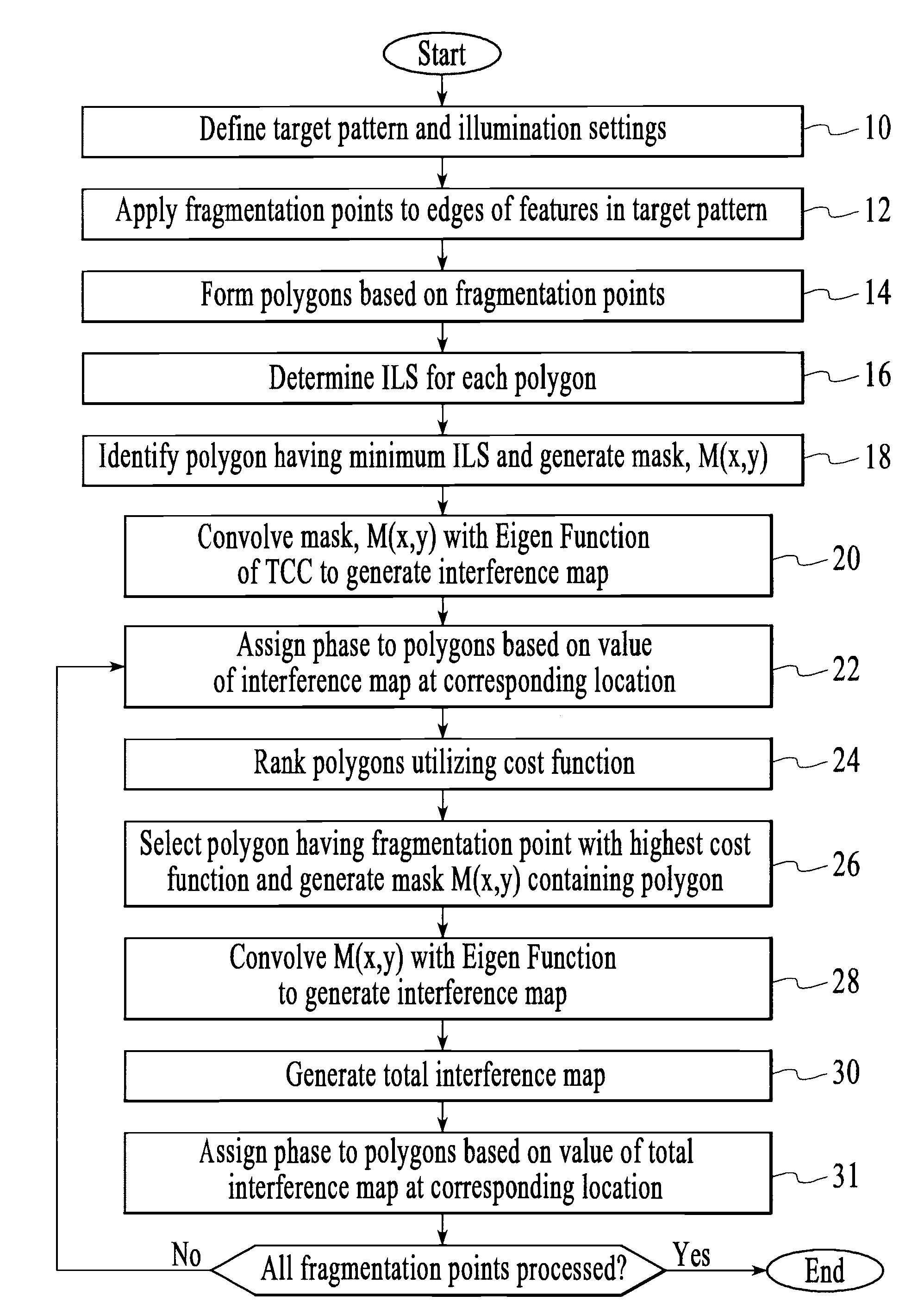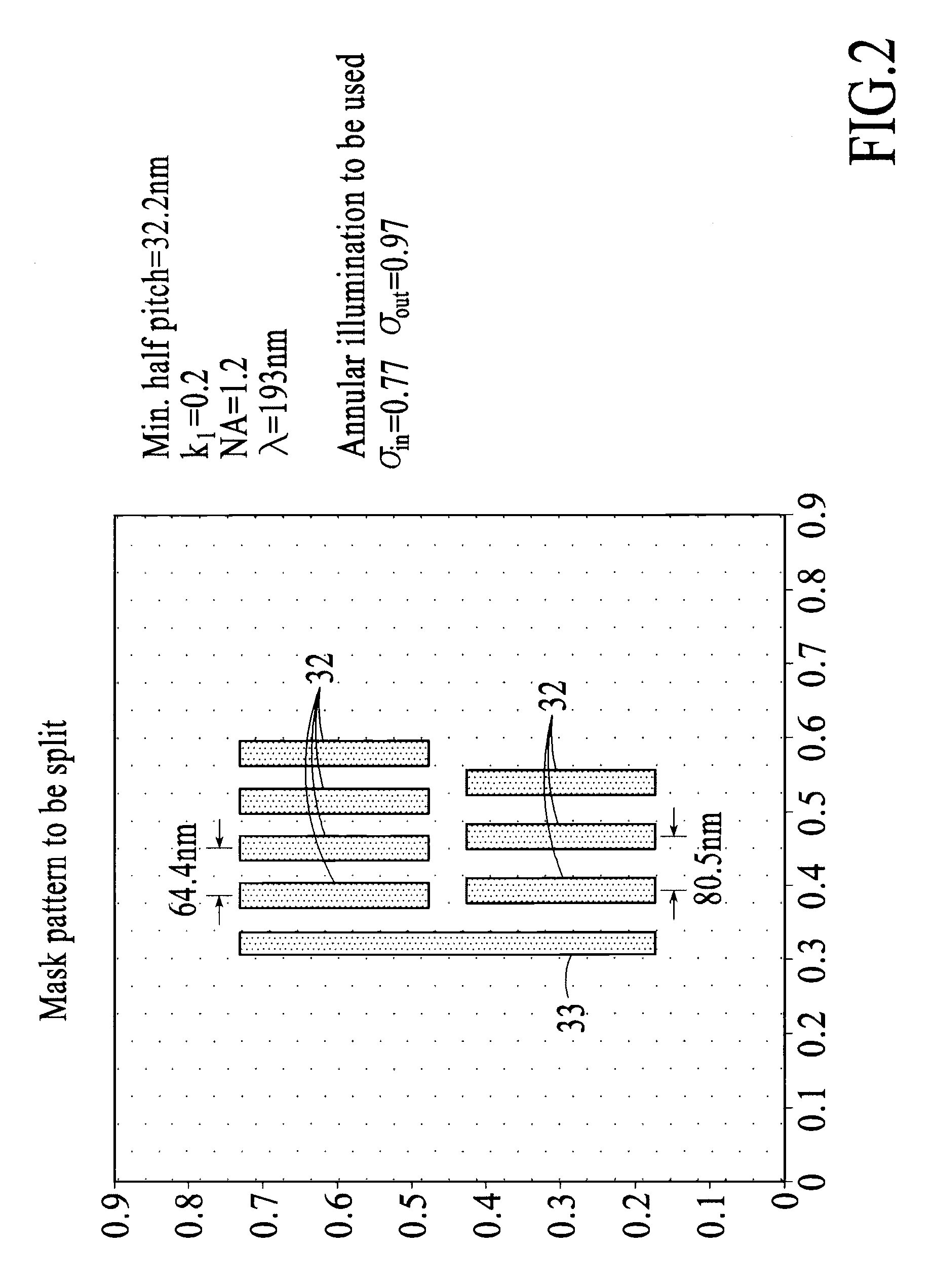Method, program product and apparatus for model based geometry decomposition for use in a multiple exposure process
a technology of model based geometry and program product, which is applied in special data processing applications, optics, instruments, etc., can solve the problems of not being able to image individual features, being increasingly difficult to reproduce target patterns on wafers, and being difficult to achieve single feature image,
- Summary
- Abstract
- Description
- Claims
- Application Information
AI Technical Summary
Benefits of technology
Problems solved by technology
Method used
Image
Examples
Embodiment Construction
[0038]As explained in more detail below, the model based coloring process decomposes a target pattern into multiple segments which are illuminated separately in a multiple exposure process. In one embodiment, the multiple segments are assigned and included in one of two separate reticles, which are subsequently illuminated. Furthermore, as shown in the examples disclosed herein, the model based coloring process, when necessary, automatically provides for decomposition of single geometry (i.e., feature) in the target pattern into multiple segments, which are then imaged in separate illumination processes.
[0039]Referring to FIG. 1, which is an exemplary flowchart of the model based coloring process, the first step in the process (Step 10) is to define the target pattern (i.e., the pattern to be imaged on the substrate) and the illumination settings that will be utilized to image the target pattern. The target pattern is preferably described in a data format, such as “gds”, which is a ...
PUM
| Property | Measurement | Unit |
|---|---|---|
| wavelength | aaaaa | aaaaa |
| wavelength | aaaaa | aaaaa |
Abstract
Description
Claims
Application Information
 Login to View More
Login to View More - R&D
- Intellectual Property
- Life Sciences
- Materials
- Tech Scout
- Unparalleled Data Quality
- Higher Quality Content
- 60% Fewer Hallucinations
Browse by: Latest US Patents, China's latest patents, Technical Efficacy Thesaurus, Application Domain, Technology Topic, Popular Technical Reports.
© 2025 PatSnap. All rights reserved.Legal|Privacy policy|Modern Slavery Act Transparency Statement|Sitemap|About US| Contact US: help@patsnap.com



